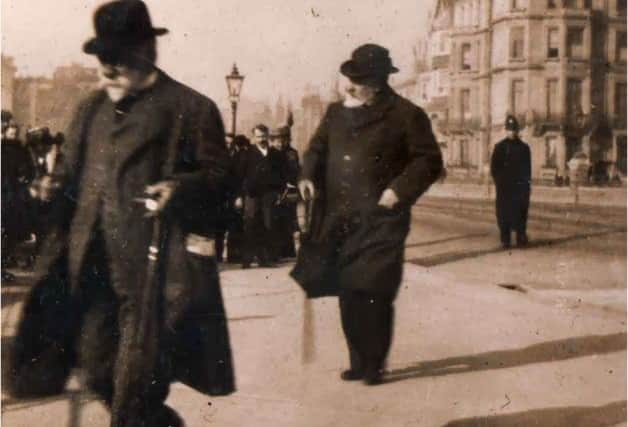The Sassoons: A family that brought exotic glamour to the city


Someone once described Brighton as 'a sea-coast town, three miles long and three yards broad, with a Sassoon at each end and one in the middle'. Which was both apt and also inaccurate - in more ways than one.
Those three Sassoons were Sir Albert Abdullah David Sassoon, a wealthy merchant and philanthropist, who lived at 1 Eastern Terrace in Kemptown from 1876 until his death in 1896; his half-brother Reuben Sassoon, who lived at 7 Queen's Gardens in Hove; and another half-brother, Arthur Abraham David Sassoon, who lived in grand style (with 13 servants) at 8 King's Gardens, Hove. So to be pedantic, there was a Sassoon at one end of town, and two at the other.
Advertisement
Hide AdAdvertisement
Hide AdAlbert was the eldest son of one of the richest men in Bombay. The Sassoons were an ancient Sephardic Jewish family, originating in Spain, that had settled in Baghdad and Persia before establishing themselves in India, from where they seem to have controlled trade all over the globe. One of Albert's brothers, Sassoon David Sassoon, was the first to move to London; Albert soon followed, having a mansion in Kensington Gore as well as the one in Brighton. The Sassoons soon controlled the important eastern cotton trade to Britain and moved in the highest social circles, Albert entertaining the Shah of Persia at Eastern Terrace in 1889, and being created baronet in 1890.


In 1892, Sir Albert built himself a mausoleum behind his house, on the corner of Paston Place and St George's Road. This curious structure, looking like some bastard offshoot of the Pavilion, with its pagoda roof and Indo-Saracenic motifs, held his own remains, and those of his son Sir Edward Sassoon, who died in 1912, until 1933, when his grandson, the diplomat and politician Sir Philip Sassoon, sold the structure, and the bodies were reburied in Willesden Jewish cemetery. Thereafter, the building went through a variety of roles, as furniture store, air-raid shelter, ballroom and, after integration with the adjoining Hanbury Arms, as the Bombay Bar. Grade 2 listed, and owned by the Proud Group, it currently houses a 'retro supper club, with cabaret and burlesque performances'.
The Sassoons were part of a wave of wealthy metropolitan Jews who in Victorian times migrated to Brighton or, more often, Hove. They included the Goldsmids and Cohens. To this day, the city's Jewish population numbers well above the national average.
Arthur and Reuben, both bankers, at first lived next door to one another at Queen's Gardens (Kingsway Court now occupies the site), Arthur moving to King's Gardens, on the corner of Grand Avenue, in 1883. Arthur and his glamorous wife Louise were intimate friends of King Edward VII, who several times stayed with them. These visits were both social and for the sake of his bronchitis and asthma. The king would be seen strolling with Sassoon on the prom, or sitting in his favourite shelter. After the king's death, Sassoon contributed towards the Peace Statue as a memorial to him. He is himself commemorated by four stained-glass windows in the Middle Street synagogue which he and the other Sassoons did so much to beautify.
Advertisement
Hide AdAdvertisement
Hide AdA fourth local Sassoon was Flora Reuben Sassoon, widow of Sassoon David Sassoon, sister-in-law of Albert and Arthur, grandmother of the poet Siegfried Sassoon. She lived at 37 Adelaide Crescent, and in 1913 bought and donated an acre of land that became the croquet lawn (later bowling green) of St Ann's Well Gardens (a plaque by the entrance records her benefaction). Remembered as 'an elegant little old lady who asked questions in a strange sing-song voice and rarely listened to the answers', she died in 1919.